Case study: Rhode Island Energy – Environmental Graphics
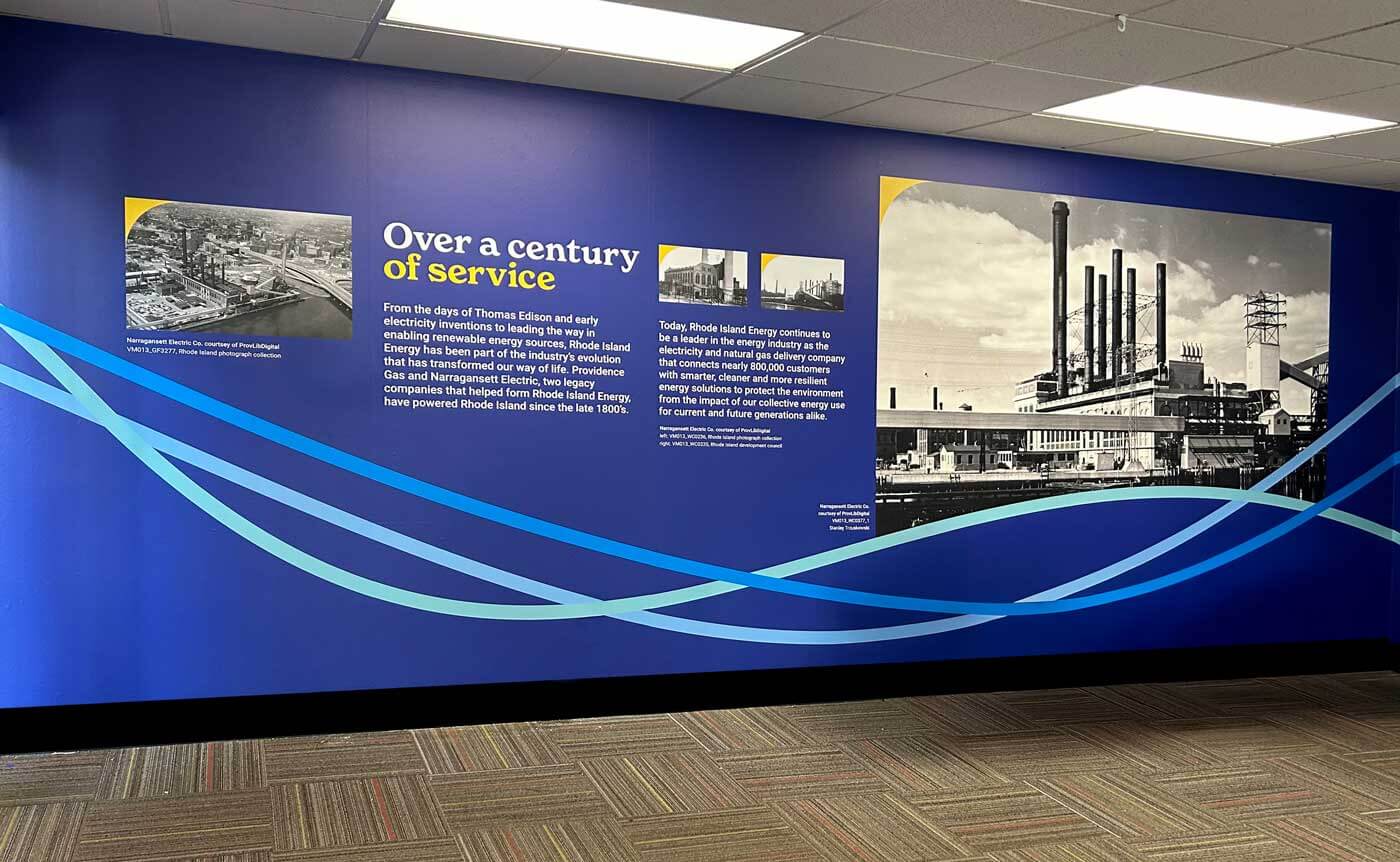
The Strategic Role of Environmental Graphics
When you think of environmental graphics in the workplace — wall murals, wayfinding systems, and experiential design elements — it’s easy to dismiss them as decoration. In reality, these visual elements do much more than brighten up walls or corridors.

Design in the workplace has a powerful influence on organizational culture, employee behavior and performance, and how visitors view your organization.
Martha Lindman
Associate Creative Director, RDW
Our recent project for Rhode Island Energy (RIE) — a massive ongoing effort covering more than 250,000 square feet in what will eventually involve eight separate facilities and locales — demonstrates how environmental graphics, executed at scale, can transform the workplace while advancing both cultural and operational goals.
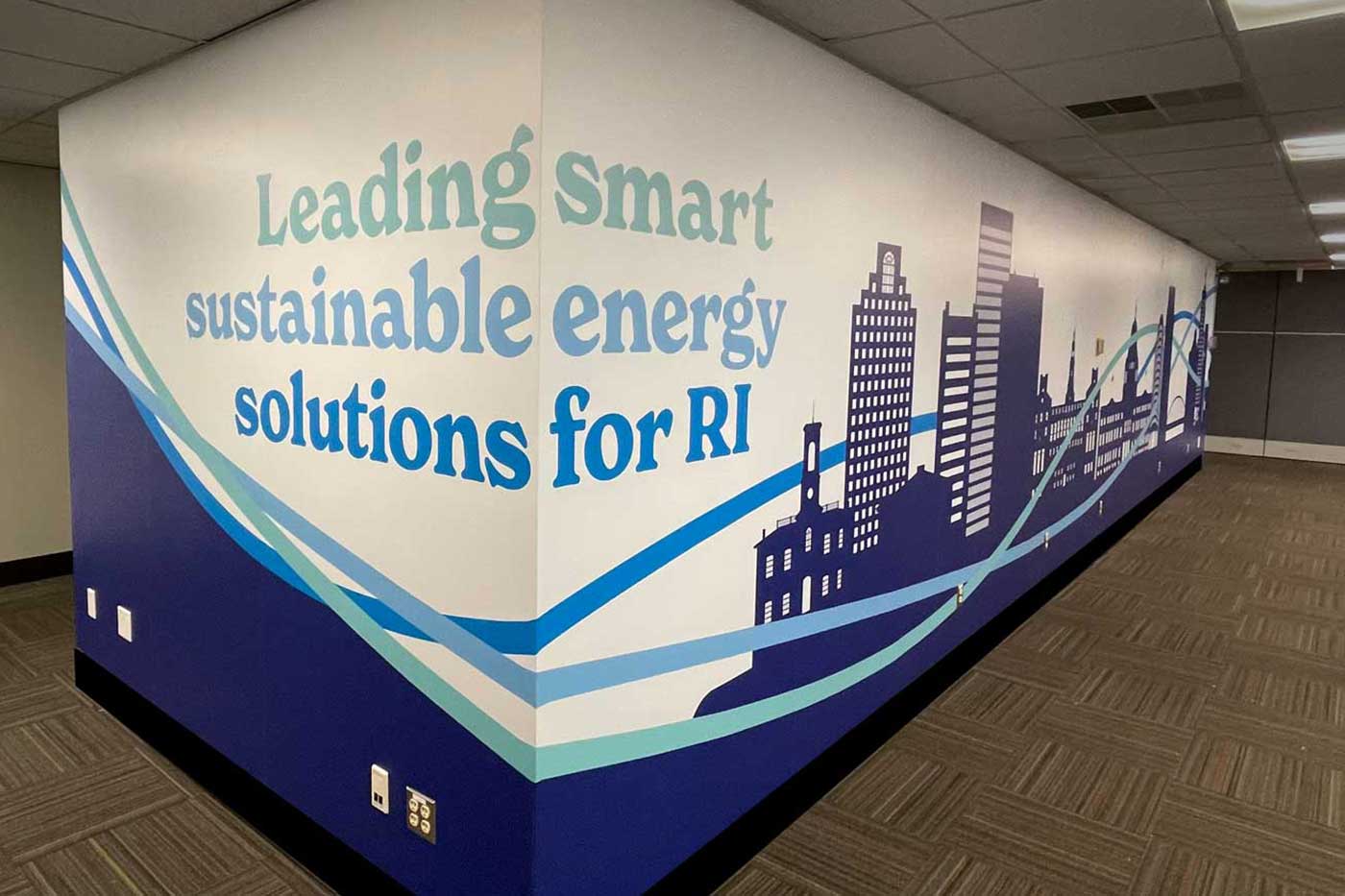
The challenge
RIE’s parent company (Pennsylvania-based utility PPL) had entered the Rhode Island market, and needed a way to tell the brand’s story — to more than 1,000 employees and to external stakeholders, including government and regulatory personnel. They enlisted us to create cohesive environmental graphics that would immediately immerse visitors in the company’s mission and core values.
Our work also needed to support a company-wide reorganization of facilities and teams. Moving personnel into more cohesive and functional work groups required physical spaces that supported effective communication and efficient collaboration. We knew graphics could play a key role in aligning people with new workflows.
Our insights
Having worked closely with the RIE team for many years, we entered the project with intimate knowledge of the company culture, mission, and workforce. This was instrumental in creating an environment in which RIE professionals would feel inspired and at home.
We were also guided by our expertise in internal communications, gained through decades of corporate communications work for clients. Our experience has taught us that environmental graphics and messaging can have a profound impact on team morale and cohesion. They make a company’s mission, values, and personality visible and top of mind. They remind employees of shared goals and give visitors an immediate sense of who the brand is and what it stands for.
Design also affects how people feel and perform. Inspiring visuals and affirming messages help employees feel connected to something larger than themselves. Mission-based graphics and storytelling displays create team spirit. And when spaces showcase innovation, they encourage employees to think boldly and creatively.

Our approach
Executing a project of this magnitude and complexity required a highly organized team and structured process:
- Assess the space. We started with maps, floor plans, site visits, and observations of finishes, lighting, and functionality. We identified structural quirks and accessibility needs, and documented the environments with photography.
- Review brand standards. We grounded the design in the company’s visual identity while we tailored messaging to each space’s unique audience and purpose.
“Know the space. Know the audience. Know the purpose.” – Martha Lindman - Map wayfinding needs. We carefully considered how people move through the spaces, including traffic patterns and key decision points. Accessibility figured prominently, down to the proper use and placement of braille in signage.
- Develop concepts. Through our research and review of reference materials, we found athletic brands to be particularly inspirational for their adventurous use of environmental graphics. We aligned bold, colorful graphics with brand, function, and message, then presented mockups and proposals for feedback.
- Secure expert partners. Once concepts were approved, we enlisted Signature Printing in East Providence, Rhode Island — a longtime, trusted partner — to help with production and installation. Their role was to select the right materials and ensure flawless execution. Their extensive experience with innovative materials and printing processes made our vision a reality.
- Supervise production and installation. Working closely with the RIE facilities team and Signature Printing, we painstakingly installed hundreds of design elements from small signage to massive wall displays.
In the first phase of our work, we completed the design and installation of hundreds of elements in three facilities. Across these sites, new graphics enhance corporate offices, training centers, conference rooms, and common areas, while also incorporating ADA-compliant signage and wayfinding systems.
Myriad elements include large wall graphics, hanging graphics, column wraps, frosted glass door signage, dozens of room plates, and signage for entryways, stairwells, and elevators.
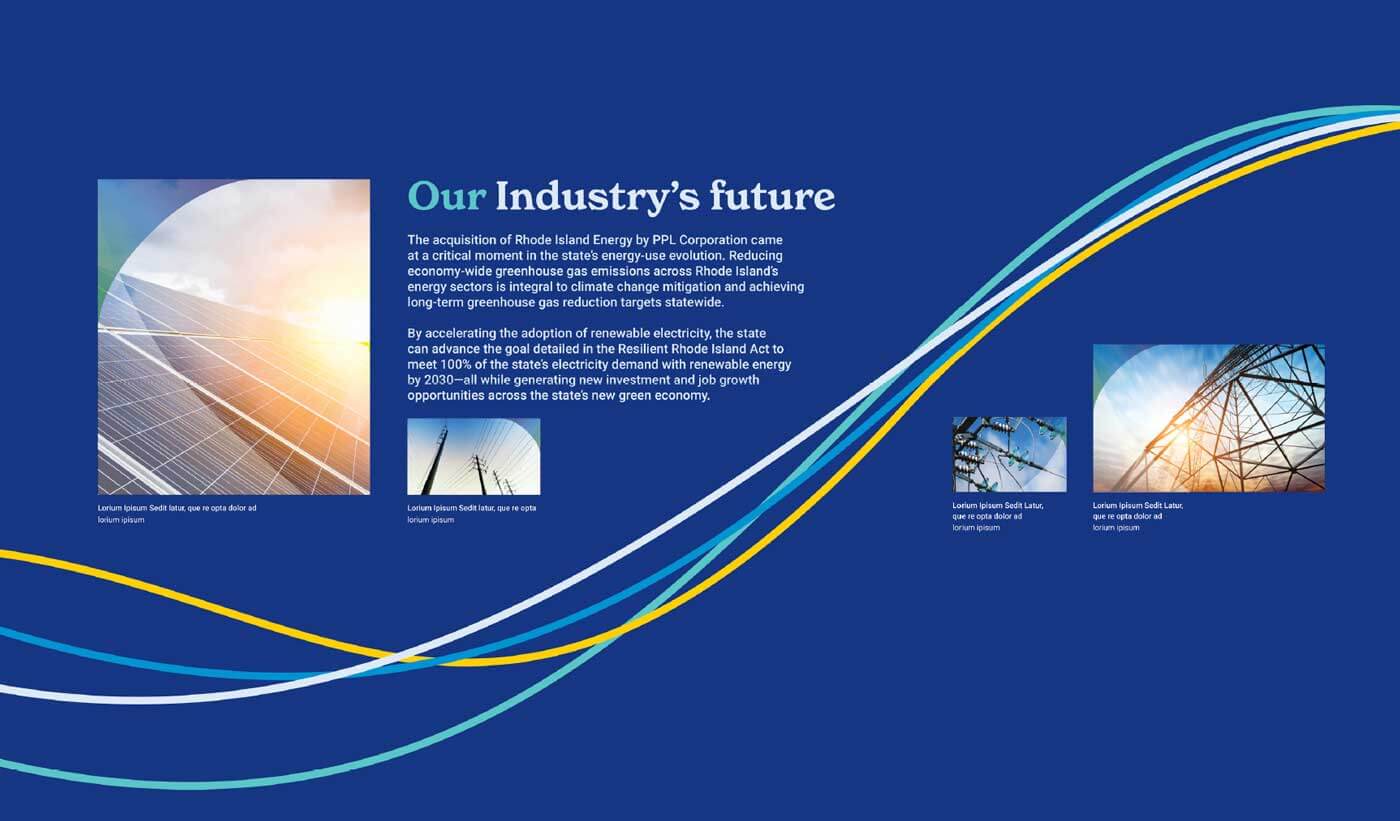
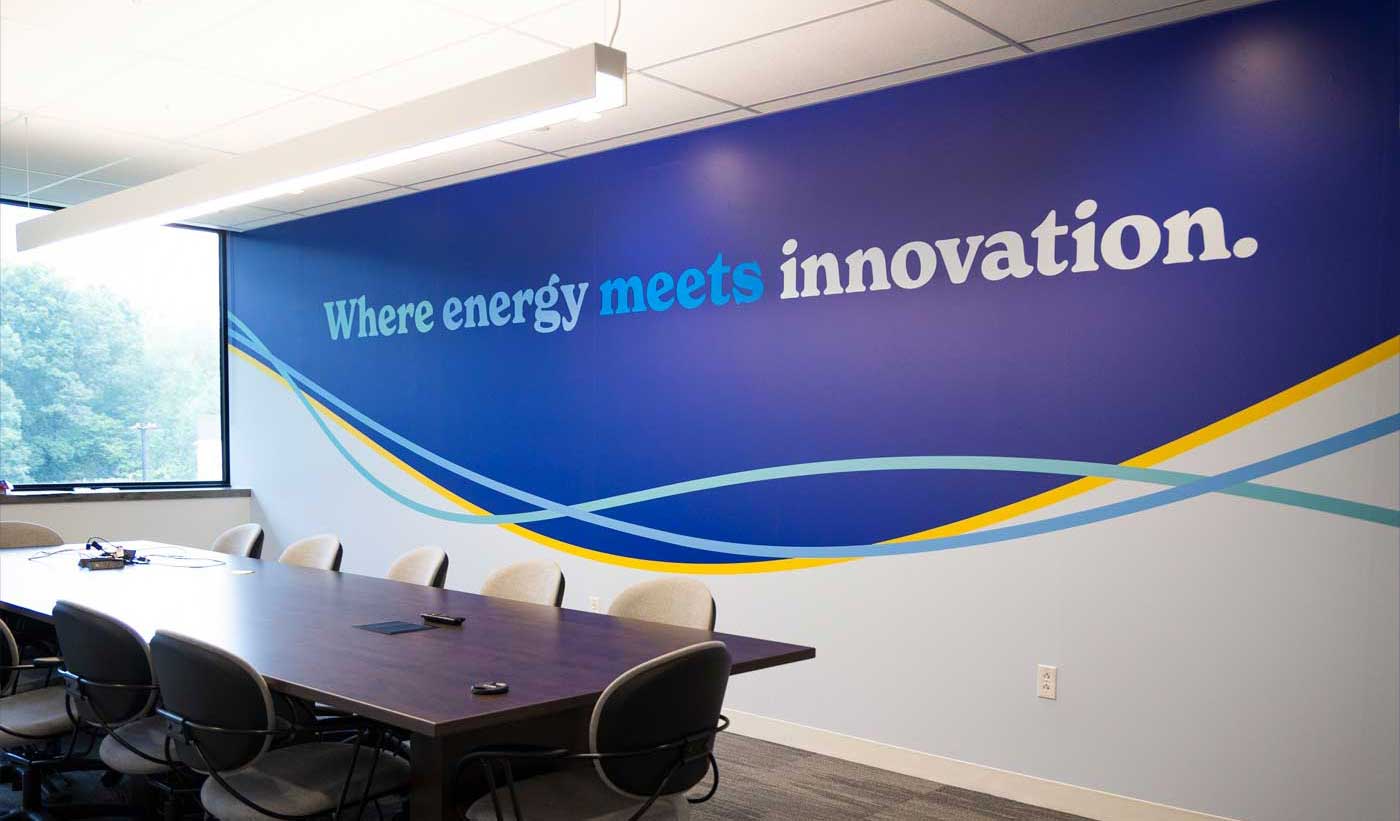
62%
of voters approved the tax referendum, a 40-point swing
#1
ranked for NM cancer care, up from #3 at campaign start
The results
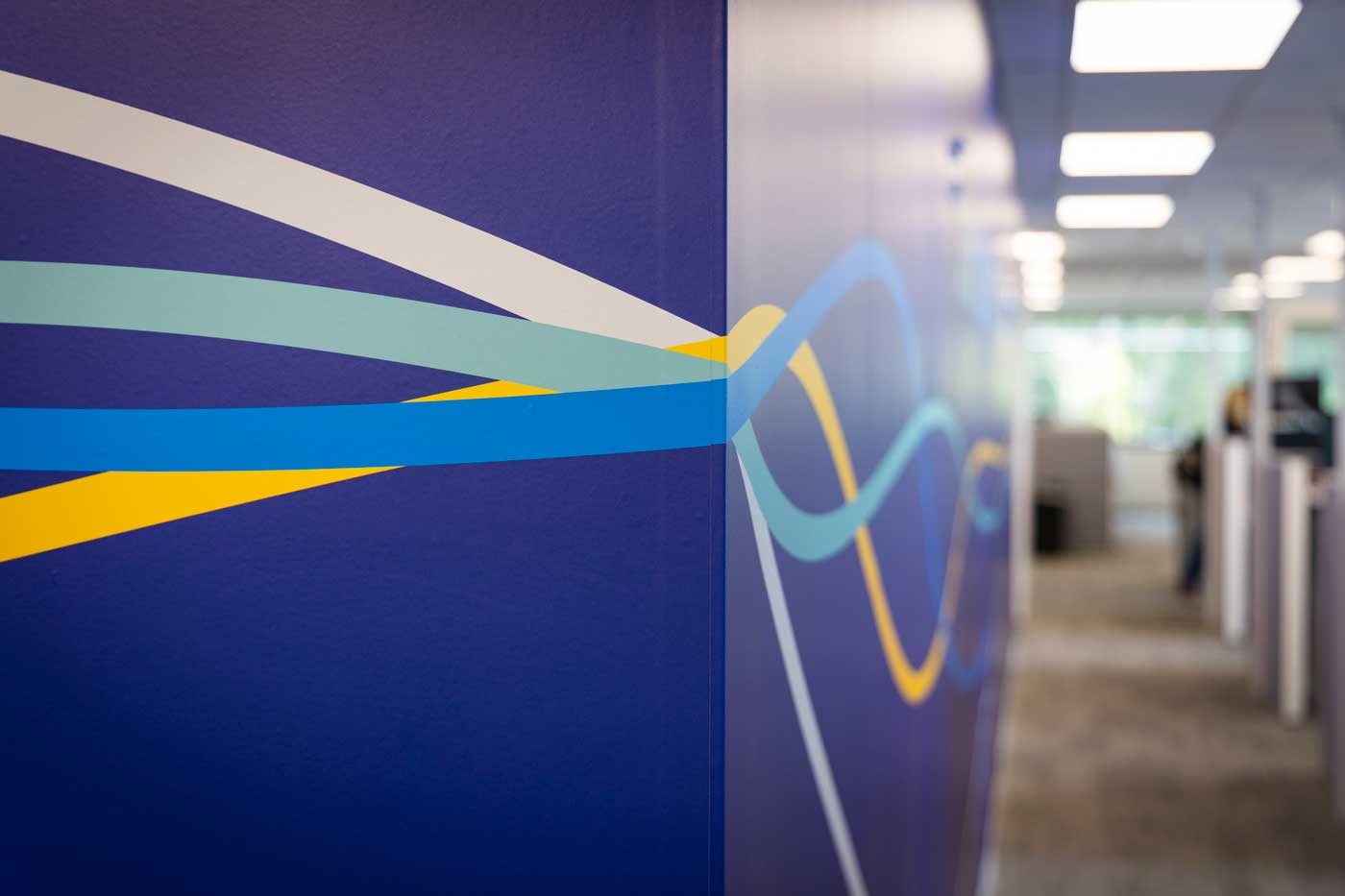
The results are already being felt. Employees and visitors alike gather in inspirational spaces to work, collaborate, and converse. Training participants exhibit heightened energy when entering redesigned spaces, and employees feel a greater sense of belonging to the larger mission of RIE and PPL. RIE plans to extend the design to at least four more facilities.
As the RIE project illustrates, environmental graphics are far more than “nice to have.” Done right, they are a strategic tool that strengthens culture, boosts morale, guides behavior, and projects brand identity.
If you work at a public entity, government agency, university or college, the next time you walk through your workplace and facilities, ask yourself: What story are these walls telling?
